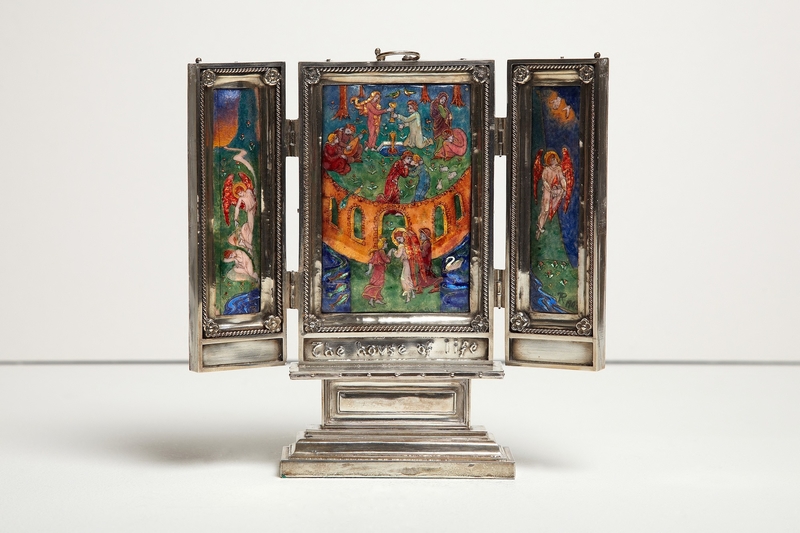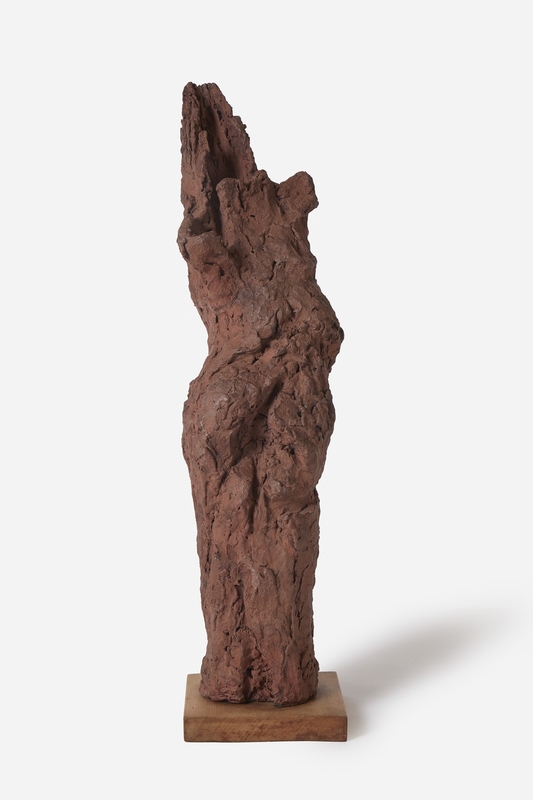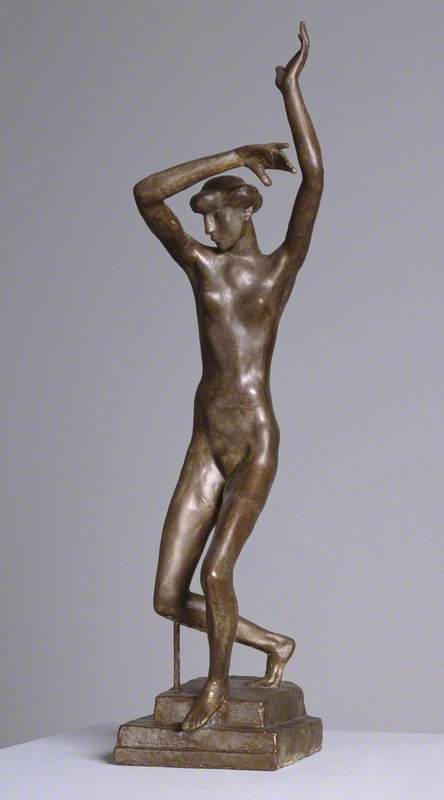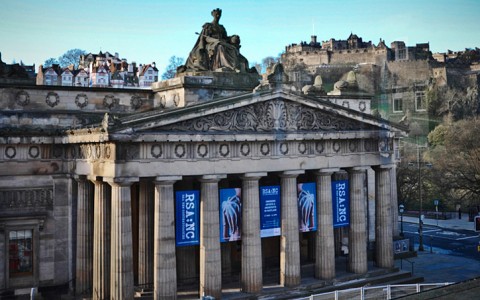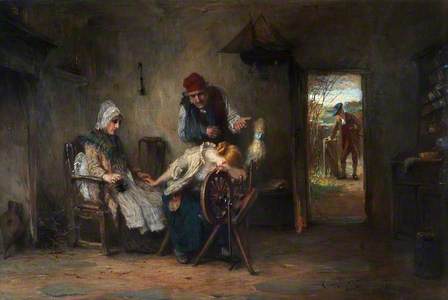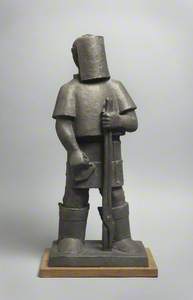The UK thrives by looking outward and embracing internationality. The story of Scottish art would not be complete without the dimension of international art and its inspiration to artists in Scotland.
Three Nymphs by a Pool before a Sarcophagus
Henry Ferguson (before 1655–1730) and William Gouw Ferguson (c.1632/1633–c.1695) 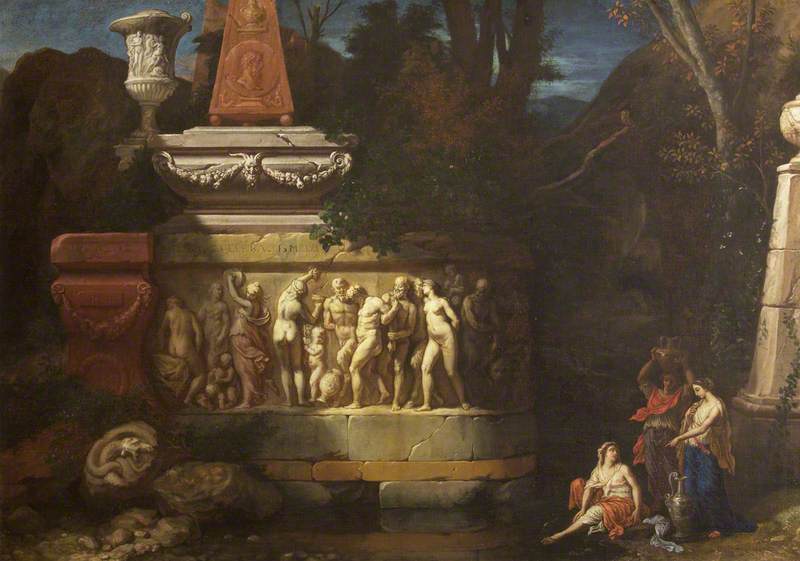
Another important strand in the story is found via the artists who have migrated here from other shores and made Scotland their adopted home. Likewise, the history of the Royal Scottish Academy (RSA) would not be complete without immigrant artists, who from the Academy's earliest years have played a key role in the institution and the wider Scottish art world.
As a national artist-run Academy of arts, the Royal Scottish Academy – founded in 1826 – had an international outlook from the outset: the very first Annual Exhibition in 1827 included the work of the American painter John James Audubon. Looking through the 1830 Annual Exhibition records, one finds the first artist born outside of Scotland, but permanently resident here: an Italian sculptor Signor Thewenti, who had his studio in Perth. The Academy's support of artists today – through exhibitions, awards and other opportunities – reflects our multicultural society.
In the Academy's formative years, during 1829, the first artist born outside of the UK was elected as an Academician. William John Thomson was born in what was British America, but fled back to the UK during the American Civil War. He was a notable painter in his day but has been somewhat forgotten since.
In 1870, Otto Theodor Leyde would become the first artist from mainland Europe to be elected as an Academician. Hailing from Wehlau in Prussia (now Znamensk, Russia), Leyde made his name predominantly as a portrait painter. He also worked closely with a German lithographer in Edinburgh, Friedrich Schenk, who was the Treasurer for a society in Edinburgh established 'for the special purpose of relieving deserving foreigners in distress'.
Following Leyde, from closer shores in Ireland came John Lavery, who was elected in 1892, and then his countrywoman Phoebe Anna Traquair. Traquair was elected an Honorary Academician in 1920, but would likely have been elected to the Academy's core artist ranks in 1901 had it not been for outdated attitudes to women artists at the time.
Fanindra Nath Bose
1920, photograph by Drummond Young 
It was in the discipline of sculpture that two of the most significant immigrant artists were elected in the twentieth century. In 1925, the Academy embraced the rare talents of the India-born sculptor Fanindra Nath Bose. Having come to Scotland in 1905, Bose would graduate from Edinburgh College of Art in 1911. He then travelled to Paris on a scholarship and met Auguste Rodin, who took a great interest in his work. His exquisite figurative sculptures in bronze, influenced by his Indian heritage and classical and modern European sculpture, led to him being regarded as the first modern Indian sculptor.
In the election of 1925, Bose won out over the sculptor Benno Schotz, who would later be elected as an Academician in 1933. Schotz was a significant figure in Scottish art, becoming a leading portrait sculptor and an influential tutor at Glasgow School of Art (GSA). In 1963 he was appointed the Queens Sculptor in Ordinary for Scotland. Schotz was born in Estonia and came to Scotland in 1912 to visit his brother in Glasgow.
He would decide immediately to make Scotland his new home and after studying at technical college, began working as an engineer at the shipbuilders John Brown and Company. His boldly modern The Iron Knight memorialises and immortalises a figure from this formative part of his life in Scotland.
At the same time that Schotz began at John Brown's, he started evening classes at Glasgow School of Art, continuing until 1917 when he was awarded the Evening School Silver Medal for excellence in modelling. He also began exhibiting at the Royal Glasgow Institute of the Fine Arts and would follow suit at the RSA the next year. In 1924, advised by his friend John Keppie, he dedicated himself to being an artist, becoming an assistant to the sculptor Alexander Proudfoot RSA before setting up his own studio.
Benno Schotz in his studio
Schotz's legacy is embedded in the cultural landscape of Scotland. He immortalised hundreds of people across social and political spectrums in his portrait sculptures. Many of these survive in public collections, while he also shaped the landscape of Scotland in his public sculptures, such as his remarkable Ex Terra in Glenrothes. His legacy further extends into art institutions and the teaching fabric of sculpture in Scotland in the twentieth century.
Unveiling of Benno Schotz's 'Ex Terra' in Glenrothes, 1965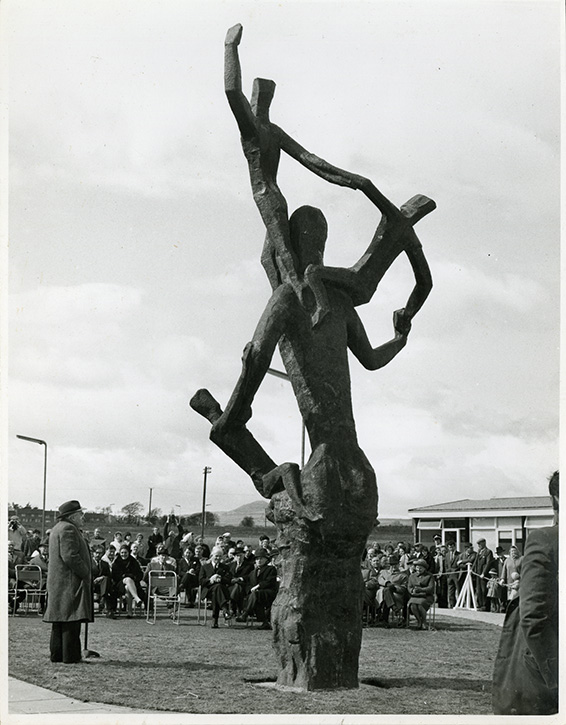
Glasgow, its culture and its School of Art were central to Schotz's practice and his life; the college would become an important symbol of the friendliness with which he was received into the artistic community in Scotland and in 1938 he would be invited to become Head of Sculpture and Ceramics there, a post he held until 1961. Schotz would nurture many students during his time at GSA, one of whom was the Romany artist Alan Fletcher, the subject of one of Schotz's most striking sculpted portraits.
Alan Fletcher with Euphonium
(Alan Robert Tregoning Williams Fletcher, Artist, 1930–1958) 1957
Benno Schotz (1891–1984) 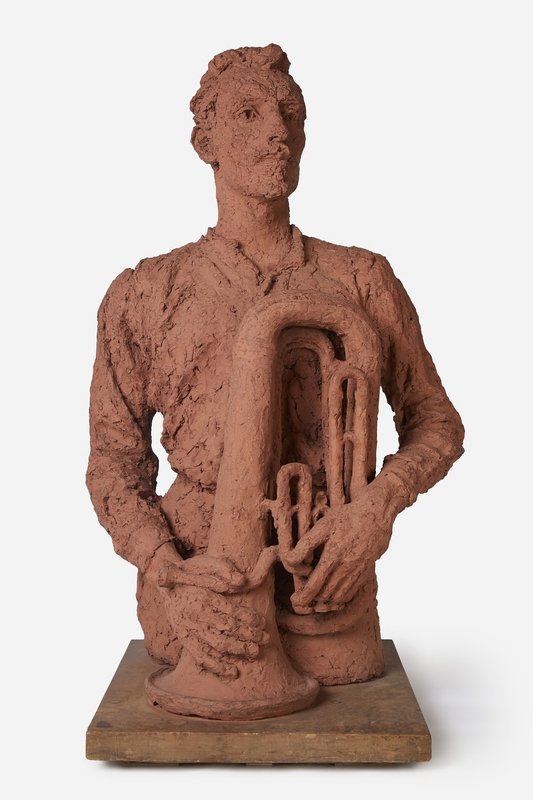
From the 1950s Schotz's art began to enter into an abstraction that was inspired by his seeing figures in trees along the River Kelvin in Glasgow and the olive trees of Jerusalem. This surprising change of direction was still rooted in Schotz's appreciation of living things and their universal origins in nature and the earth.
'You have to find some universal mythology or symbolism. The Greeks could express all their emotions and beliefs through the human form of their gods and goddesses. On Gothic sculpture the mythology was Christian, and of course, Christian symbolism is still used today. My mythology is Nature in the tree, and Nature is inexhaustible. You can plunder it for ever. Nature and humanity is the aim, to transmute a tree into the thought of a man.' – Benno Schotz, c.1961
Schotz saw himself as a Glaswegian and a Scot; his legacy of inspiration to fellow and following artists has endured through the sculpture prizes established in his name, which are still awarded today at the Royal Scottish Academy and Glasgow School of Art.
Benno Schotz teaching at Glasgow School of Art
Immigrant artists to Scotland of the past and present are celebrated in the exhibition 'Benno Schotz and A Scots Miscellany' at the Royal Scottish Academy. The changing face of the Academy mirrors that of art and culture in Scotland and artists such as Ade Adesina, Thomas Joshua Cooper, Joe Fan, Beth Fisher, Ilana Halperin, Leena Nammari and Jacki Parry continue to carry the torch for internationalism.
Cooper's nomadic photography, which explores our water, land and the edges of the earth's continents, and Halperin's work, which considers bodily perceptions of geological time, resonate with the concept of migration, and how a deeper understanding of these forces puts today's political reactions in a more meaningful context.
'There's a pink granite quarry in Fionnphort on Mull. That stone was shipped all over the world, even to New York. My understanding of geological and mineral material, and the migration of living and inorganic beings back and forth across the Atlantic grew over time. My family fled across the Atlantic. From the earliest geologic moments, landmass travelled across the surface of the earth. Rocks were the first immigrants, and we followed.' – Ilana Halperin, 2024
'Benno Schotz and A Scots Miscellany' is showing at the Royal Scottish Academy in Edinburgh until 19th January 2025.
Sandy Wood, Collections Curator at the RSA



